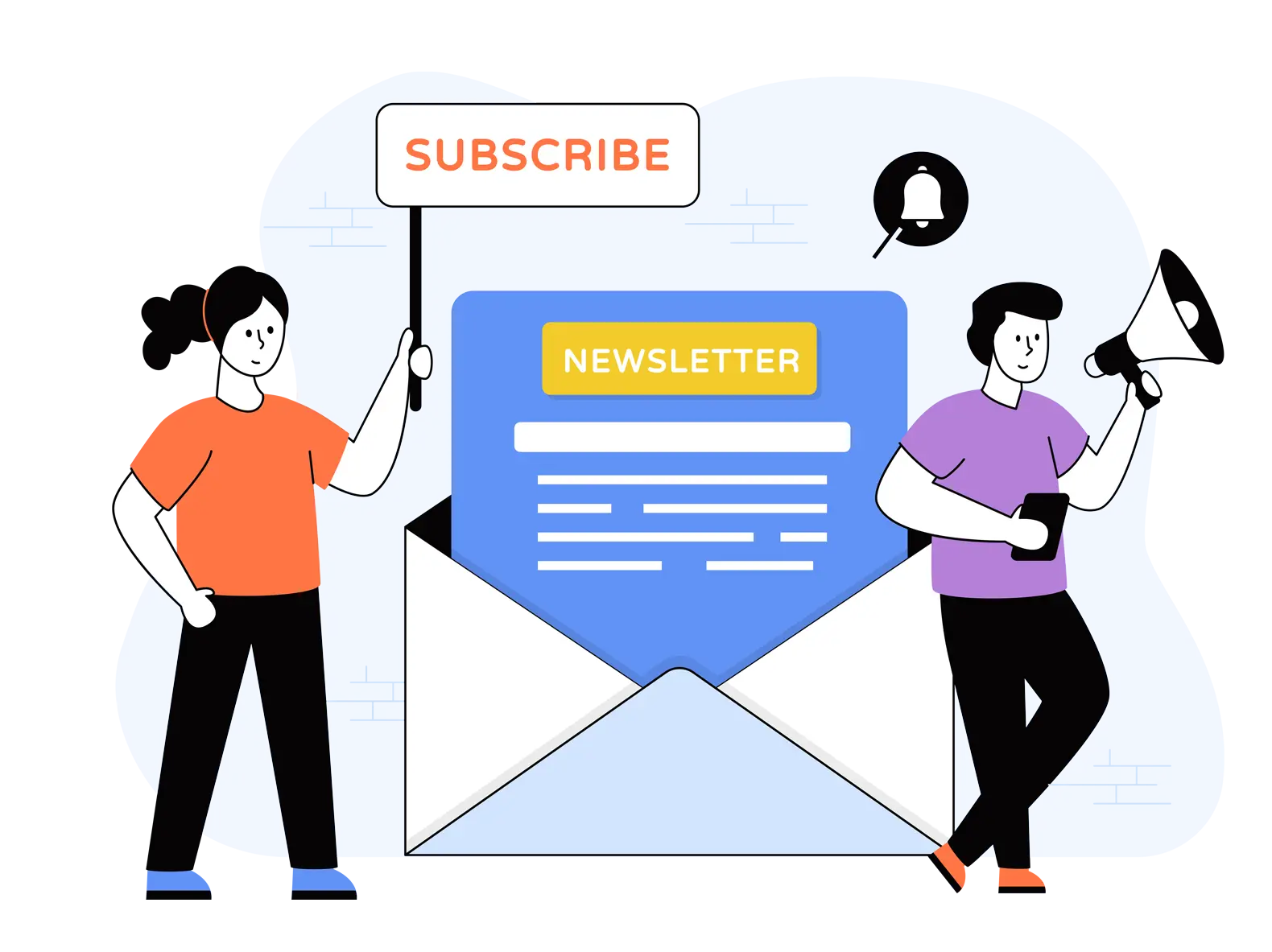In this digital era, time is precious and finding the right information at the right time is of the utmost importance. Enterprise Content Management in the past was mostly just piling up a stack of paperwork and dumping it in a storage room at the office location.
The unstructured mess was hard to sift through and led to frequent losses of critical documents.

Source: PairSoft
This System Is Clearly No Longer Feasible In This Cut-Throat Competitive World
Enterprises are digitizing, leading to mounting piles of information coming in from different platforms and applications. Businesses have also spread out globally with a hybrid working model allowing some to even work remotely. Hence, Enterprise Content Management now entails digital management of business content.
This is by no means a new concept, though, and is a rapidly growing industry. According to Mordor Intelligence, the Enterprise Content Management market, valued at USD 47.29 billion in 202, is predicted to grow to USD 105.56 billion by 2026.
The blog defines Enterprise Content Management, its importance, and the critical capabilities provided by an efficient Enterprise Content Management tool.

What is Enterprise Content Management?
Enterprise Content Management can be defined as electronically managing content throughout its lifecycle from capture to distribution and everything in between, supporting productive information usage in enterprises.
According to Gartner;

The basic premise is to have all your structured and unstructured content stored systematically for immediate retrieval when the need arises from an authorized stakeholder of your organization. ECM tools ensure that all your enterprise content is searchable, accessible to authorized individuals, and preserved for a lifetime.
What’s the end goal? Business success through reduction process automation and improved productivity of knowledge workers. Above all else, teams across the globe will be able to collaborate seamlessly.
What Exactly is ‘Enterprise Content’?
There is no concrete definition of enterprise content. Still, it can be said that these are information assets that come in various formats (paper documents, electronic files, emails, audio, video, etc.) from a variety of sources. All have one thing in common – they contain the information required by any of your organization’s stakeholders (employees, investors, customers, etc.).
Importance of Enterprise Content Management
Enterprise Content Management tools help organizations centralize all the business content and streamline the flow of information, supporting cross-team collaboration. The key is to ensure that the right information is available at the right time, saving operational costs as well as saving valuable time of knowledge workers. Going paperless also saves costs in terms of storage, printing and shipping.
But saving cost and improving employee productivity is not the only benefit of enterprise content management. Enterprise content also encompasses confidential information only for the eyes of certain authorized individuals. These can be trade secrets, financial plans, or even just personally identifiable information of employees.

Any sort of security breach or leakage of such information will not only lead to a monetary loss but can also damage the reputation of your organization and even could help your competitor get ahead of you. Hence, having a secure enterprise content management system with appropriate security and access control features is critical.
There is also always the risk of unpredicted disasters or errors causing the loss of critical enterprise content. An efficient ECM will ensure that your data is backed up at all times to remove any such risk.
Other than internal factors, there are many industry and region-specific compliance applicable on different enterprises with various data governance and protection requirements. An ECM will help you automate the implementation of these policies rather than you having to manually ensure that the right processes are put in place and followed through.
The Inner Workings of an Enterprise Content Management Solution
Enterprise Content Management solution is an end-to-end solution required from content capture to disposal. Let us go over all the key content lifecycle stages that ECM assists in.
Enterprise Content Management through the Content Lifecycle Stages
-
Content Capture
ECM helps you capture all your paperwork in electronic form as well as import them from different tools and applications utilized by your teams. The content includes everything from contracts to resumes to marketing videos and confidential recording meetings.
-
Content Storage
ECM system provides you with a centralized digital repository to securely store all your content. It also backs up all your content, ensuring that copies are available in case of any mishap. Plus, the system allows you to edit your documents and immediately auto-saves any changes made.
-
Content Management
Appropriately organize all your digital content on ECM and index their metadata to ensure searchability for swift access when required.
-
Content Distribution
ECM tools ensure that your content is accessible, but only to the authorized audience. The documents are available to the end-user on any device or browser. ECM also allows you to securely share your documents when required.
-
Content Preservation
ECM not only stores your business-critical content but also archives it to ensure retention in the long term, supporting business continuity even when team structures change and new employees come in. Compliance with government regulations is also ensured.
-
Content Disposal
Based on the retention period, unused and old documents can be disposed of to remove unnecessary clutter and reduce storage costs.
What to Look Out for While Choosing An ECM Solution?
For choosing an efficient Enterprise Content Management solution, you must research in-depth the solutions present in the market and analyze them based on how they cater to the following factors:
-
Business Goals and Objectives
It is important to figure out how an ECM solution will help you achieve your business goals and objectives. Based on that, you will know which features to look out for when choosing the ECM solution.
-
Who Requires the Information?
Keep the end-users and their content usage in mind when picking out an ECM solution. Based on that, you will know your storage, sharing and other content management needs.
-
Content Types
What types of content do you work with. Do you have a lot of paperwork that you need to convert into an electronic format? Are you working more with unstructured content like documents, emails, etc.? Do you have a lot of information in audio and video form? Choose an ECM that caters well to your content needs.
-
What Tools Are Producing and Storing the Content Currently
Integrations are a critical part of ECM as they cannot operate in a silo. It should be able to seamlessly integrate and help your team access the information in as little time as possible.
New Age Brings in New Content Types – Where Does Video Fit In?
ECM is made to handle as many content types as possible. But everything comes with a limitation. Video is a limitation for an ECM solution. Video usage is rapidly rising in the business world from marketing to sales to training to internal communication; video has penetrated most aspects of business.
However, video asset management is no easy task. They come with their own set of unique challenges that are very different from other content types. But there is no denying that they are critical information assets that have a lot of value.
Need of the Hour: Enterprise Video Content Management System
Suppose your organization is increasingly working with more and more video content. In that case, you are in need of an Enterprise Video Content Management System that can not only handle all your documents but is also specially designed to handle all your video streaming and management needs.
VIDIZMO EnterpriseTube | Centrally Stream & Manage All Your Video Content
VIDIZMO EnterpriseTube is a Gartner-Recognized enterprise video content management system for live and on-demand video streaming and management. The AI-powered enterprise video platform helps you create a secure Corporate YouTube-like video portal with an organized video library and smart search functionality; even in-video search is possible using the automatic transcription and translation functionality.

Above all else, the platform is highly secure and supports limited sharing with an external audience without the need for videos to be downloaded. The videos are optimized for viewability on any device, browser and under varying bandwidth conditions. All critical compliances are met, keeping special consideration of the requirements for video data governance; even automated video redaction is possible using AI tools.
Or Integrate Your ECM With VIDIZMO
VIDIZMO offers integration with top enterprise content management systems; Laserfiche and SharePoint. In this route, your team will directly be able to access videos on your existing ECM.
So, when a team member opens up a video in your ECM, VIDIZMO's HTML5 interactive video player will pop up with all the above-mentioned capabilities in place, including closed captions, keyboard shortcuts, interactive elements like quizzes and much more.
The player will also ensure compatibility with all browsers and devices as well as ensure best possible playback experience. Plus, VIDIZMO's AI-powered search will also accessible directly on your ECM solution among other video functionalities as part of your YouTube-like video library to ensure automated video management.
If you are working with a ton of video assets, try VIDIZMO for free today or contact our team to clarify any other queries.
Posted by VIDIZMO Team
We at VIDIZMO are experts in secure and compliant video streaming and digital evidence management. Our aim is to help educate such that you can better utilize your video data.
- Tags
- EVCM





